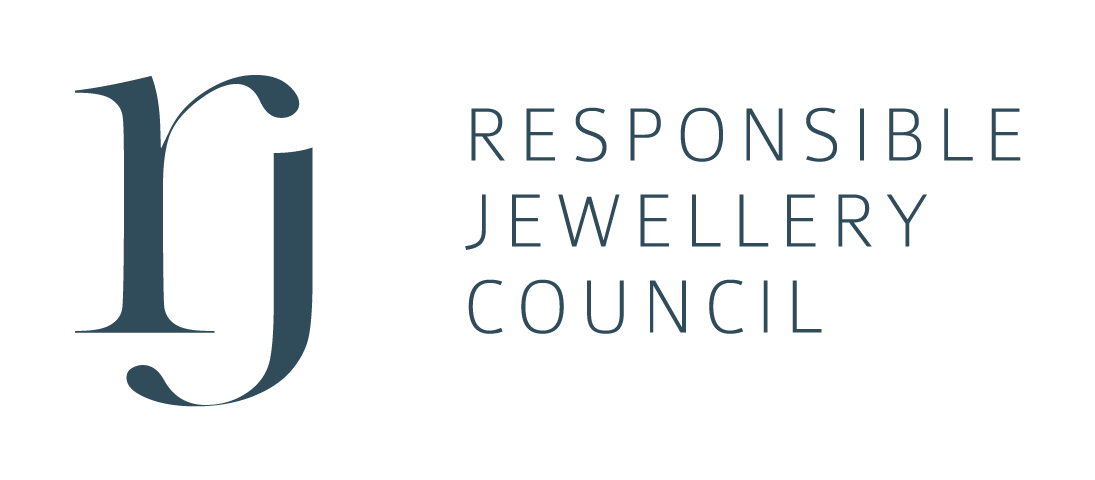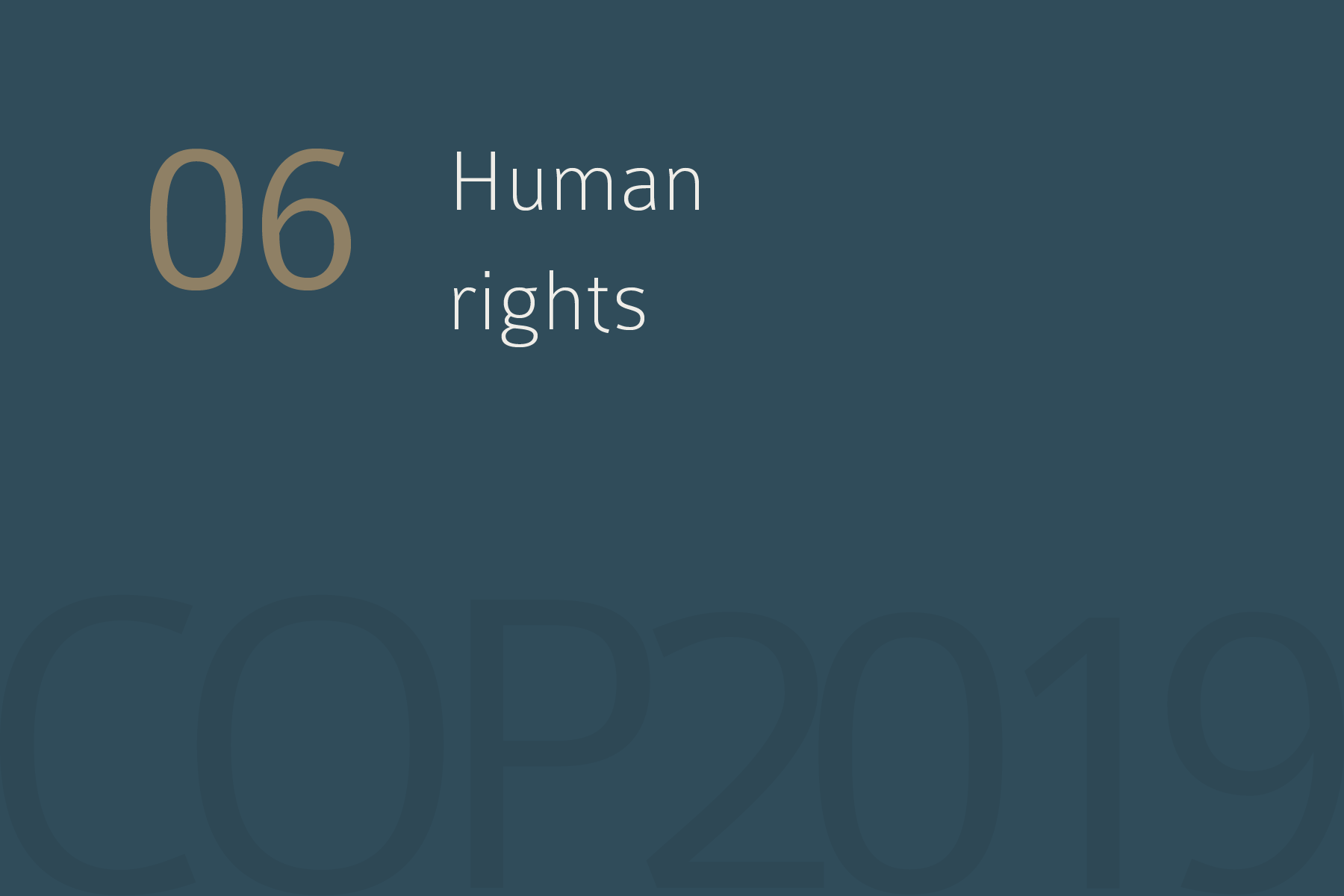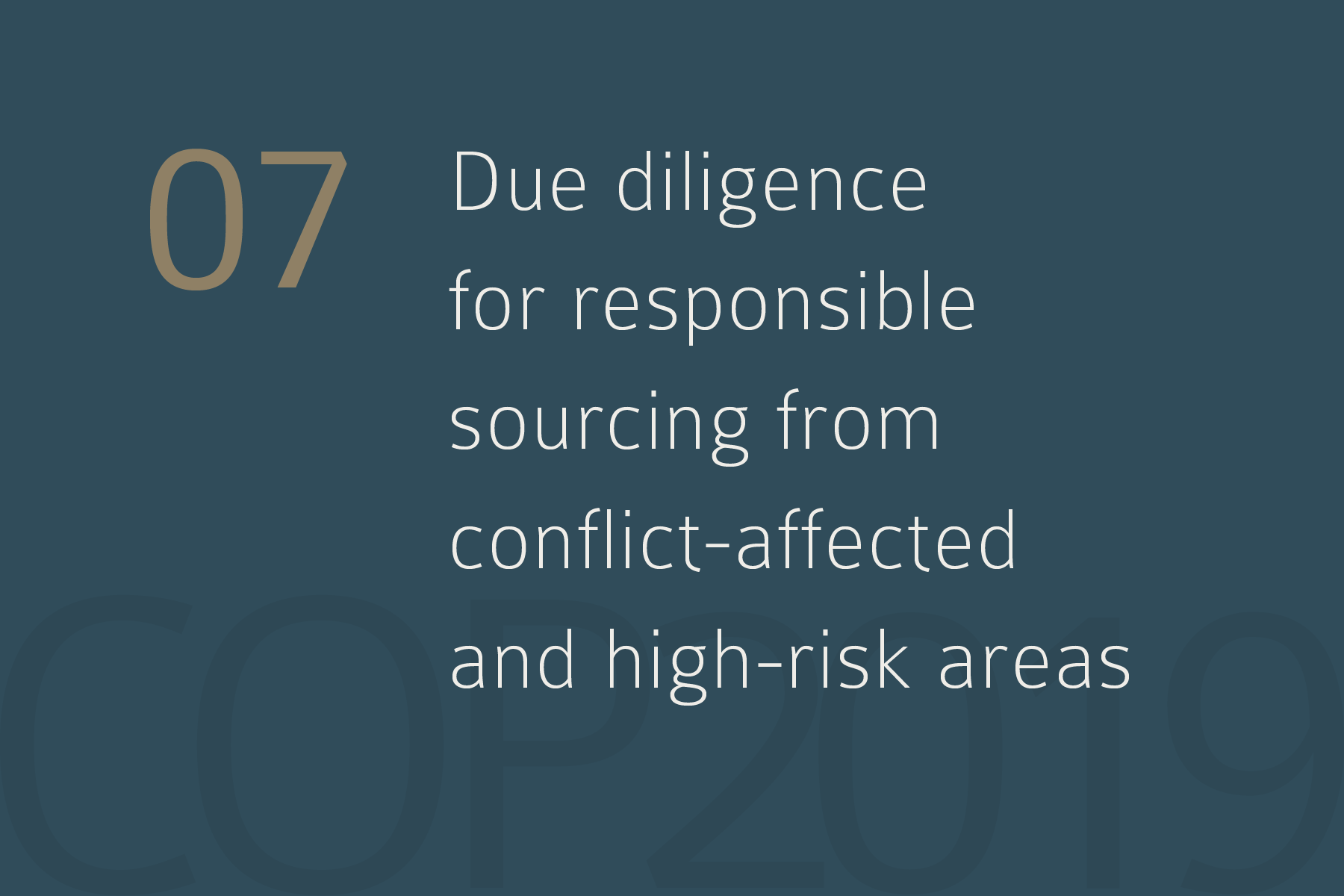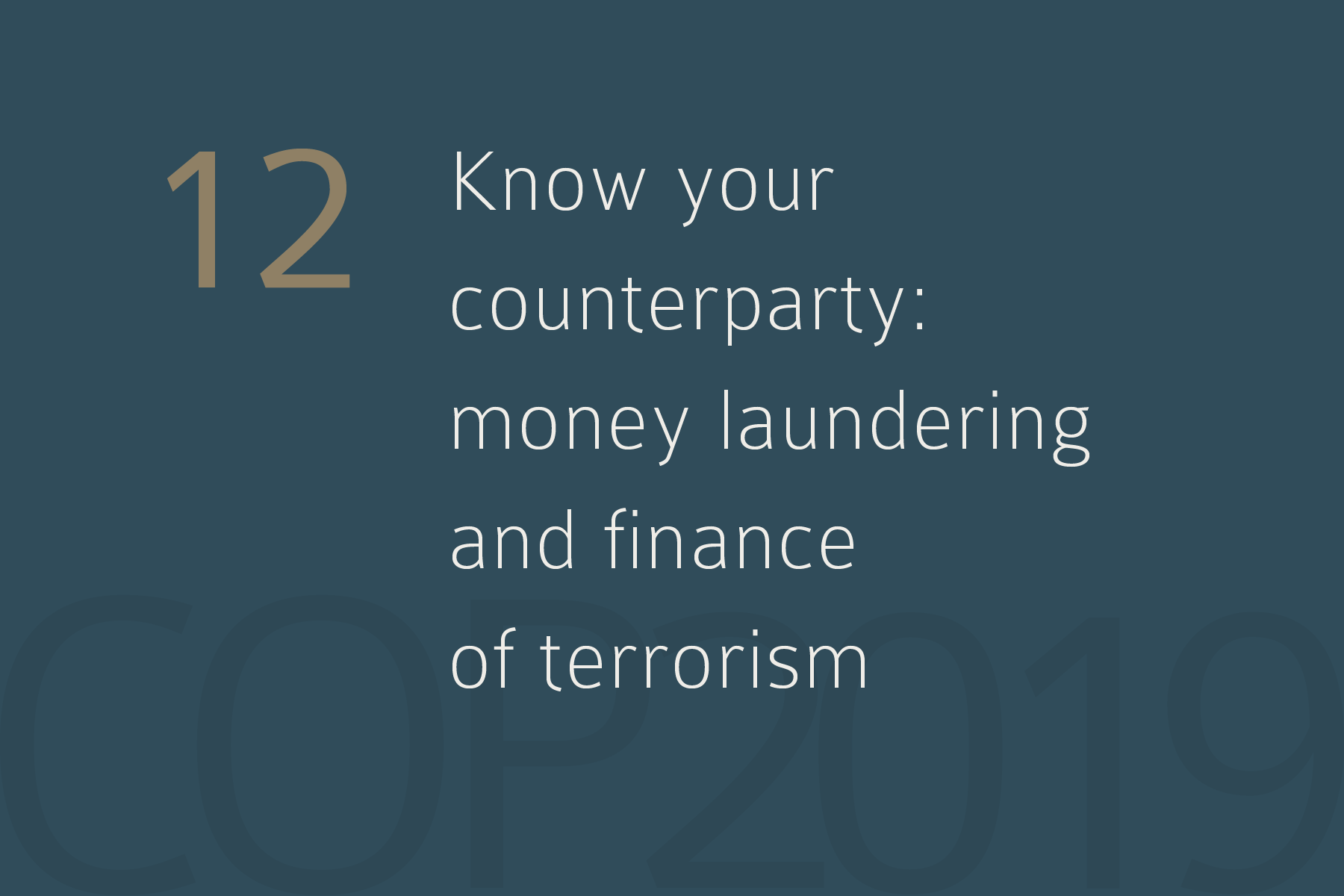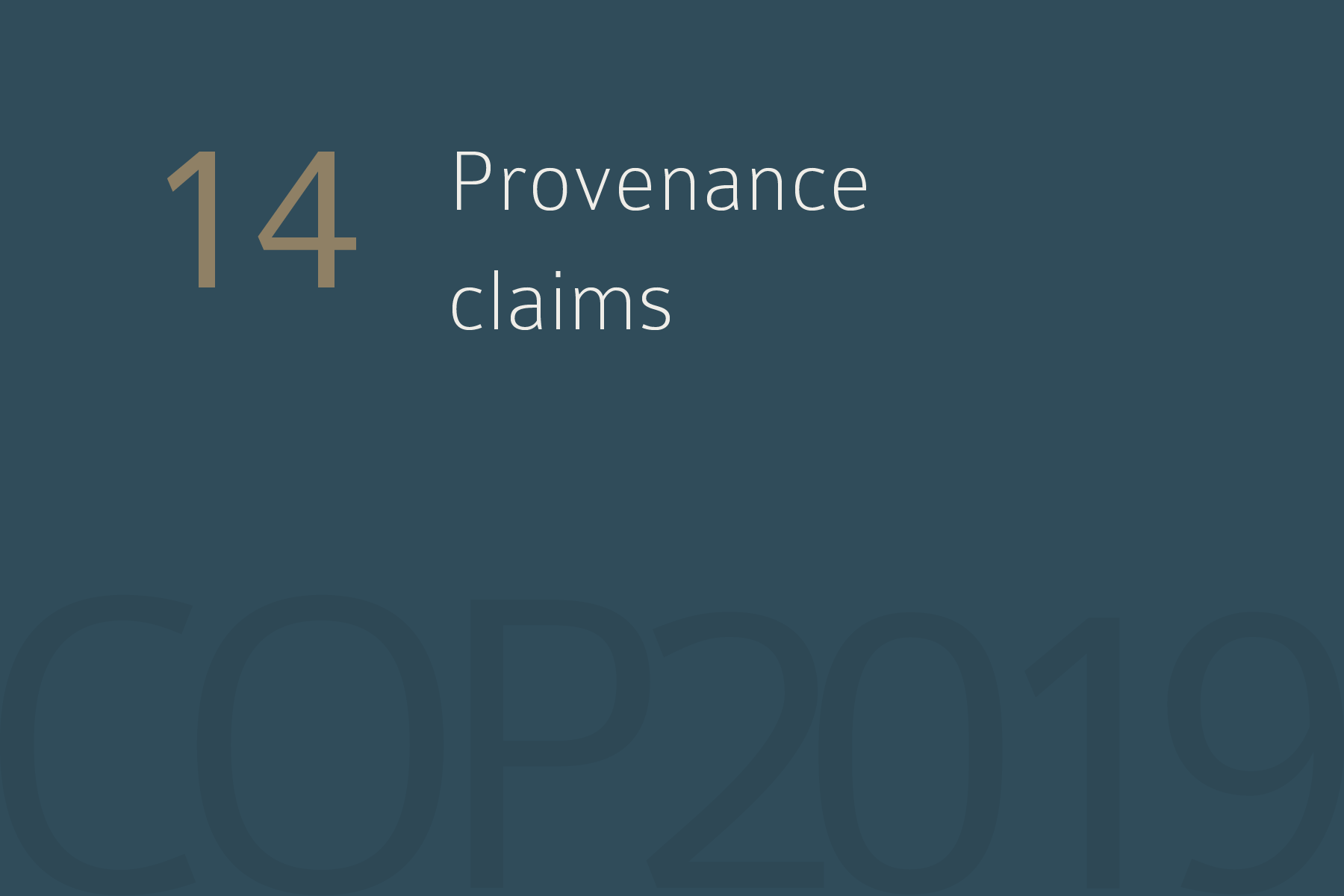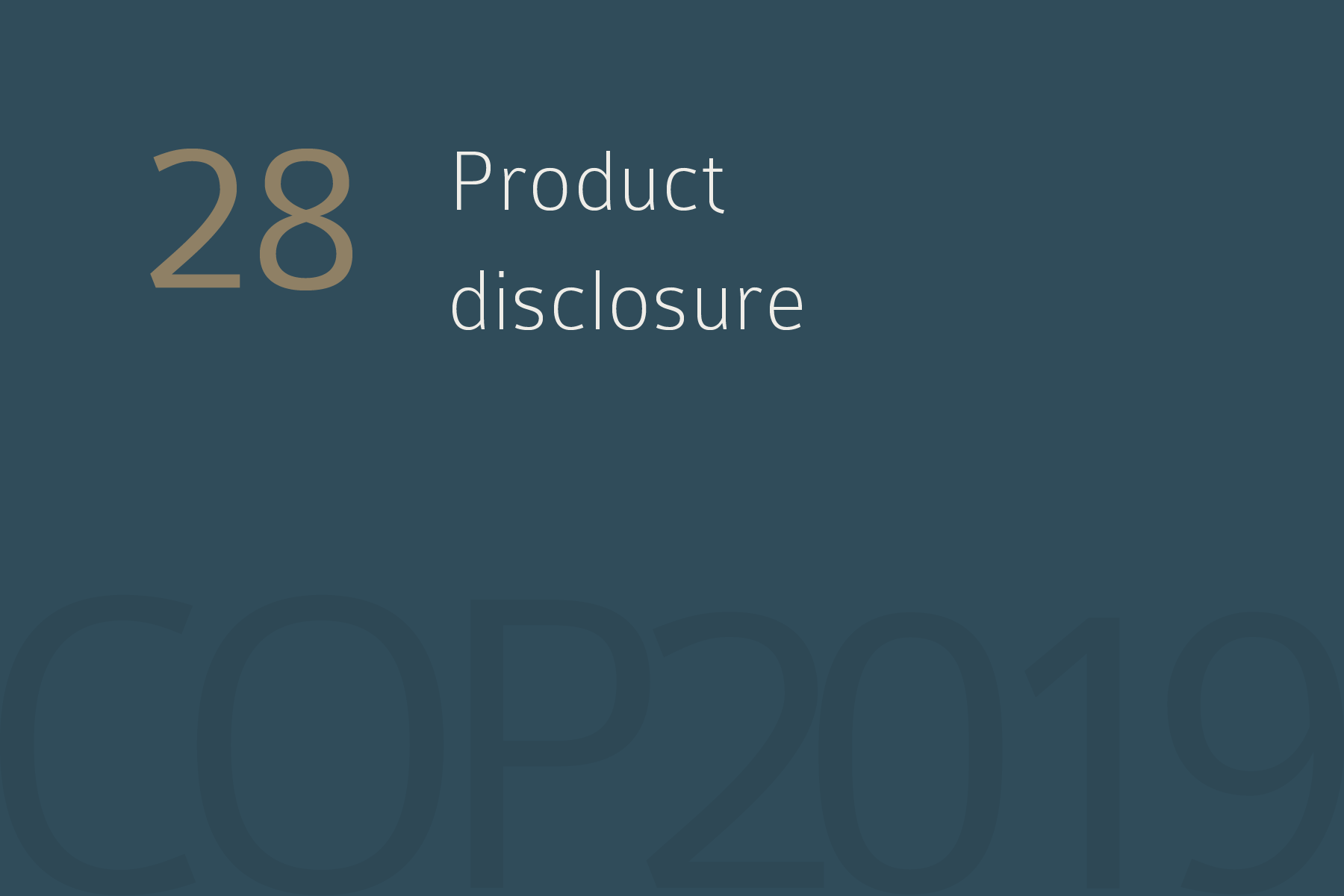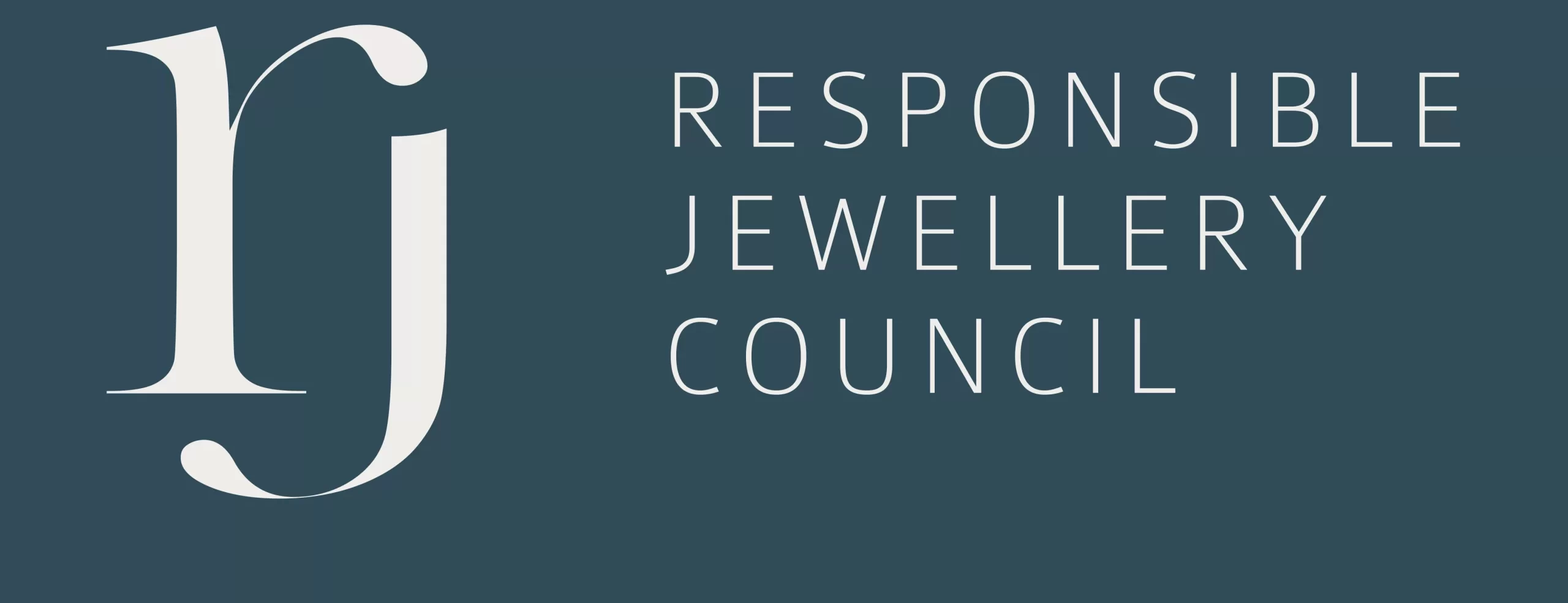The RJC Walkthrough series has been created to help familiarise you with the fundamental principles of the 42 Provisions of our core standard – RJC Code of Practices 2019. It can help you prepare for your certification audit, refresh your knowledge after certification, and transition from the retired Code of Practices 2013 Standard to the current 2019 Standard. Training support is also available from our Helpdesk & Training Team.
training@responsiblejewellery.com
+44 207 321 0992
Featured Provisions
Visit our dedicated pages for greater detail on our featured provisions.
Highlighted Provisions
Use these walkthroughs as a guide on how to implement the Code of Practices 2019. Training support is also available from our Helpdesk & Training Team.
Make sure you have systems, processes or procedures in place to monitor legal developments and identify new risks; ensure your company complies with all applicable laws in your country.
- Antwerp World Diamond Centre http://www.awdc.be
- Bundesverband Schmuck, Uhren,
Silberwaren und verwandte Industrien e.V. https://bv-schmuck-uhren.de/
- CIBJO, The World Jewellery
Confederation http://cibjo.org
- Confindustria Federorafi http://www.federorafi.it
- Dubai Multi Commodities Centre
(DMCC) http://www.dmcc.ae
- Fondation de la Haute Horlogerie
(FHH) http://hautehorlogerie.org
- GIT – Gem and Jewelry Institute of
Thailand http://www.git.or.th
- Hong Kong Jewellery & Jade
Manufacturers Association http://www.jja.com.hk
- Jewelers of America Inc http://www.jewelers.org
- National Association of Jewellers
(UK) http://www.naj.co.uk
- The Plumb Club Association Inc https://plumbclub.com/
- Union de la Bijouterie et
Horlogerie http://www.u-b-h.com/
- Union Française de la BJOP http://www.bjop-france.com
Develop a ‘responsible business policy’ to help your company implement and improve responsible business practices. This policy should be documented in full and reviewed once a year.
You should communicate the policy to anyone working for, or on behalf of, your business by holding formal awareness sessions or by publishing the policy on your intranet. We also recommend that you make the policy publicly available, for example through your website or newsletter.
Begin by appointing a senior manager to take overall responsibility for the policy. This person should help embed the policy throughout your company by ensuring it is reflected in all your operations.
The senior manager should also hold an annual review meeting to identify any gaps between policy and practice, and then develop and implement an action plan to close them.
Where relevant, the senior manager should coordinate his/her efforts with the results of your latest RJC audit.
Make sure you have a platform for telling your stakeholders about your business practices—for example, a page on your company website, an email list or a social media account.
Remember to be both flexible and practical in how you communicate your business practices. For example, if you are a small company, your best option may be to simply send out a memorandum or email report. But if you are a large company, your stakeholders may expect a longer report as a print or online publication.
Management needs to prepare financial statements. This involves the structured presentation of financial information, typically in four basic financial statements – balance sheet, income statement, earnings statement, and cash flow statement. These should be done in accordance with applicable law and the generally accepted accounting principles (GAAP) for the jurisdictions in which you operate and carried out with the oversight of a qualified accountant.
Begin by reviewing all your business partners (contractors, agents, customers, suppliers and joint venture partners) and determining which relationships are ‘significant’. A business relationship is significant if the partner is a major customer or supplier (in terms of volume or value), or if your association with it could impact your reputation.
Next, carry out a risk assessment to establish the level and nature of risks that come with your most significant relationships. At the same time, identify those business partners that you can potentially influence. Remember that your level of influence will vary, depending on your size and duration and importance of your relationship.
Finally, using the information you have gathered, engage with your business partners—particularly the significant ones—to raise awareness of responsible business practices. Your efforts should be commensurate with the opportunity to effect positive change, and can be as simple as attaching a copy of your responsible business policy to company contracts.
You will be audited on what your company does, not what your supplier does. But if they pose a risk to your business, you must identify it.
Visit our dedicated page for Provision 06 →
Toolkit: download our human rights due dilligence toolkit →
First, draft a policy statement. It can be a stand-alone policy, or be included in your ‘responsible business policy’ (see provision 2.1). Either way, it must be: approved by senior management; informed by expertise; clear on expectations (of employees, contractors and business partners); communicated externally and publicly available; and reflected in operational policies and procedures.
Second, conduct due diligence. This means assessing the potential and actual human rights impacts of both your company’s own activities, and those of your supply chain. Make sure you revisit the due diligence process regularly, to keep it up to date.
Third, if you do identify any potential or actual human rights impacts, implement actions to both fix them and prevent them from happening again. This can include acknowledgement and apology, compensation, ceasing the activity or relationship, or some solution agreed by all involved. Consider the most appropriate way to communicate the outcomes of any remediation processes, particularly to those people who were impacted.
Visit our dedicated page for Provision 07 →
“The only way you can trust your source is to make sure they know their source.” Due Dilligence, OECD
This provision introduces the OECD Due Diligence Guidance for Responsible Sourcing from Conflict Affected and High-Risk Areas, including practical approaches to implementing the 5 Step process to mineral supply chain due diligence described in the Guidance. It is relevant for any companies linked to the minerals trade, from mine, to refiner, trader, manufacturer, to end user, as well as to auditors, governments, civil society and other key stakeholders.
If you source directly from artisanal and small-scale miners (ASM), you should confirm that the miners are operating legally, or do your best to support their legalisation.
Following that, you should do due diligence to first identify any human rights, environmental or health and safety risks posed to the miners and then work with them to remediate them. Examples of remediation strategies include training, technical assistance, capacity building, support for improvement projects or financial incentives.
Companies that source industrial precious metals recycled from e-waste should be aware that this type of post-consumer scrap is most closely associated with social, environmental and public health risks because informal recyclers often operate outside of environmental and labour regulations; and they rarely have access to the tools or safety equipment they need to safely recycle e-waste. Individuals at the bottom of the value chain are particularly vulnerable to exploitative labour practices, including forced and child labour.
If you identify such issues in your supply chain, your options for mitigation include:
- providing training, technical assistance and advice, for example on how to improve working conditions or how to use more environmentally friendly recycling processes and techniques;
- building local capacity by, for example, supporting community health and educational projects to improve awareness and understanding of forced and child labour issues; and
- offering financial incentives, where appropriate, to encourage and facilitate improvements to site conditions and practices.
Whatever action you take to mitigate risks and negative impacts, continue to monitor site/facility conditions and practices regularly. Be aware that the informal recycling sector plays an important potential route out of poverty for disadvantaged families and communities. You should also assess opportunities to support the development of those involved in the sector, aligning with any national or international development agendas where possible. Look for, and get involved with, local or national initiatives working to tackle issues within the informal recycling sector in your supply chain.
Compliance checklist:
- Can you show the auditor how you have assessed the risks associated with your direct informal suppliers of recycled gold, silver and/or PGM?
- Can you show the auditor the approaches you have taken to reduce or avoid these risks and to support development opportunities?
- Can you show the auditor how you have developed, implemented and assessed the effectiveness of your remediation plans (where applicable)?
Tailor your approach to community development to suit local conditions and contexts, including the nature and scale of your business, the resources you have available and the local people’s needs and priorities. Examples of activities you might carry out include training and skills development for local workers, educational events for young people, or support for community activities and events.
Try to identify and engage those parts of the local community that are particularly interested in, or affected by, your company ‘s activities. Try to target those community members who are vulnerable or marginalised such as women.
First, draft your bribery policy statement. This can be a stand-alone policy, or be included in your ‘responsible business policy’ (see provision 2.1). Either way, it must be approved by senior management and communicated to all employees and any other people acting on your behalf. It should address bribery in its strictest sense, ie the offering, promising or giving (as well as the demanding or accepting of) any undue advantage to (or from): public officials, political candidates, parties or officials, or private sector employees, directors or officers. Your policy should also cover some explicit issues, including political donations, charitable contributions and sponsorships.
Make sure you also build in sanctions for those who do not comply with the policy.
Carry out a risk assessment to identify those parts of your business that are exposed to bribery risk. The assessment should identify all relevant types of bribery risk and distinguish between different parts of your business, according to their level of risk. This differentiation will help you target anti-corruption programmes, controls, training and monitoring at the areas at greatest risk. Consider getting a risk expert in to help you do your assessment, especially if your company operates across many locations with complex business relationships.
Set up a ‘third party gift register’ and use it to record any gifts that you or your staff give receive or accept. This includes large charitable contributions or sponsorships, as well as community payments and hospitality expenses. Note that your gift register does not have to be a stand-alone system, but can be integrated into your payment system for example.
Visit our dedicated page for Provision 12 →
Please find two template documents you can download here:
2.KYC policy and procedures template
Use Know Your Counterparty (KYC) principles to combat money laundering (the process used to disguise the origin of financial proceeds of crime) and terrorism financing (any activity that financially supports people who encourage, plan or engage in terrorism). In practice, this means establishing the identity of all the organisations with which you do business, ensuring a clear understanding of your business relationship with each, and being reasonably able to spot and react to unusual or suspicious transactions.
As part of implementing KYC principles, you should conduct a risk assessment of all your business partners (see provision 5.1). High risk partners may include those that: consistently prefer cash transactions, use unusual financial terms and conditions, use a little known or far away bank, frequently change their bank account, have their offices in high risk countries, or conduct their business through intermediaries.
For each high risk business partner, identify the beneficial owner and principal—the person who ultimately owns or controls the business and the person on whose behalf a transaction is being done.
The circumstances under which you need to report a transaction or activity as ‘suspicious’ vary from country to country and are typically set out in national law. Make sure you know the relevant laws and thresholds that apply in all jurisdictions where you operate. And make sure you have a robust process in place for reporting both business partners and end consumers to the relevant authority if necessary.
If your business is in the jewellery supply chain—where materials are highly valuable—then security to manage risk is a requirement. You should carry out a risk assessment to understand exactly how much of a risk.
If you find you are at significant risk, make sure you address the problems by developing security policies and procedures, eg training, security arrangements for transporting goods.
Visit our dedicated page for Provision 14 →
This provision allows members that make claims about the provenance of materials (source, origin or practices used when sourcing), to have these audited as part of their RJC COP audit. It does not require members to make provenance claims so it is only audited if it is applicable to your company, and you want to make a claim.
Make sure you provide your workers with employment contracts that are written in a language they can understand, and that indicate their rights and responsibilities with regard to wages, working hours and other conditions.
Make sure you understand the applicable law in your area of operations, as some forms of labour-only contracting may be prohibited (many jurisdictions will have established guidelines to help you identify what contracting arrangements are or are not allowed).
You must ensure that all your apprenticeships and training positions are legitimate and in accordance with applicable law. The RJC Code of Practices does allow use of short-term employment contracts (eg temporary employees), sub-contracting and home-working as a strategy for managing varying business demand. But these employment arrangements cannot be used to avoid statutory obligations to employees.
Keep your employee records in a manner that is consistent with the terms and conditions of the employment contract. For example, if working hours do not vary or are set (eg in a general office or retail outlet) or if hours are at the discretion of the employee (eg for managers), you can simply record working hours in the employment contracts themselves. But if wage payments vary depending on working hours, you should keep detailed records of the time worked (or product produced), by the month, week, day or hour as appropriate.
First make sure you understand the applicable law on working hours in the countries where your company operates. This includes identifying any relevant collective bargaining agreement with trade unions or other worker organisations.
Then develop an effective system for recording the number of hours worked by each employee.
The COP does not set limits for number of hours worked per day, but this is often set by national law. Production quotas for piece rate systems should be set such that the minimum daily quota should be achievable within an 8 hour shift. The normal work week for part-time workers should be calculated on a pro-rata basis against a full time week.
All hours worked beyond the legislated or agreed working week is considered overtime. Make sure that any overtime worked by your employees is voluntary: if your employees have to work overtime to earn minimum wage—or if they are coerced into working overtime beyond legal limits—this may constitute forced labour. In some cases, applicable law will allow you to calculate average working hours (including overtime) over a period of longer than one week.
Remember that collective bargaining agreements do not take precedence over applicable law.
Nearly all countries have a national body that determines relevant minimum wages (the minimum amount of money that must be paid to workers). But you can also negotiate wages and other benefits directly with the trade unions that represent your workers through a collective bargaining agreement. If employees have to register with a social insurance scheme to receive statutory benefits, it is up to you to ensure that this happens and that there is an effective administration system in place to deliver the benefits.
Remember that if training employment is legally allowed, these employees must also earn at least the legal minimum wage. If you have part-time workers, pro-rata the applicable wages as appropriate.
Make sure you pay overtime for any employee that has a contract with defined working hours. And make sure you pay it in accordance with applicable law or any collective bargaining agreement.
If there is no applicable law or agreement, calculate your overtime pay at a premium rate on the wages paid for a normal work week. This premium rate should be equal to or greater than the prevailing industry standards. Note that ILO Conventions 1 and 30 set overtime pay as not less than 1.25 times the regular rate—a useful benchmark in the absence of any other regulation.
Risks of inappropriate disciplinary measures may be higher or more evident in certain countries, industry sectors or in particular occupations. A risk assessment appropriate to your circumstances is one way to check where there may be a risk of inappropriate or unacceptable discipline or grievance procedures. Security forces can present particular risks and should also be assessed where present.
Develop a written policy for discipline and grievance procedures that outlines the legal and company-specific penalties for different types of inappropriate behaviour (by both workers and supervisors). Consider establishing a series of escalating steps for disciplinary procedures, according to the seriousness of the behaviour.
Whatever you decide, give your employees—especially supervisors, line managers and others in a position of authority—proper training on your disciplinary procedures. And in all cases, do not allow your security forces to discipline your employees
Whether or not particular forms of ‘work’ are prohibited as ‘child labour’ depends on a number of factors (child’s age, the type and hours of work performed, the conditions under which it is performed and the legal framework of individual countries and sectors). RJC members should follow the national law requirements if more stringent than ILO Convention 138. A risk assessment appropriate to your circumstances can be used to assess where there may be a risk of child labour in your business. Issues to assess as part of the risk assessment include:
- Areas of hazardous labour, mapping current worker ages against tasks. Confirm that no worker under 18 is involved in hazardous work.
- Contractors working at your facilities.
- Migrant workers and availability of personal identity information.
- Relationships with suppliers/sub-contractors as a potential supply chain risk
- Any artisanal mining sourcing relationships
Your business should develop policies and procedures against child labour. This should include effective procedures for verifying age prior to recruitment and for not accepting into employment any person who lacks proper identification with proof of age and appears to be under 18, and maintain copies of documentary evidence of worker ages (or equivalent, for example start dates of long-term employees) on file. Where there are on-site contractors, ensure that they comply with your child labour policy.
Carry out a risk assessment to determine where there is risk of forced labour and human trafficking in your company. Remember to include your contractors, suppliers, agencies and labour providers in your assessment, and look out for indicators of risk of forced labour such as recruitment fees, passport retention, complex wage payment structure and loans. If your company employs migrant workers, check the recruitment process for any potential forms of coercion.
If you find any incidences or risks of forced labour, take action to remediate the situation.
First examine your own business operations as well as those of your business partners (sub-contractors, labour brokers or private employment agencies) to confirm you are neither directly nor indirectly engaging in human trafficking.
Then look at all your recruitment agencies and ensure that:
- They do not engage in fraudulent practices that put workers at risk of forced labour and trafficking.
- The workers they contract for you are properly protected when it comes to wage, working hours, overtime and other working conditions.
- The recruitment costs are not borne by workers.
- The agency is licensed or certified by the relevant authority.
Make sure your employees are free to form or join a union or worker association of their own choosing. Don’t promote any particular union or workers’ association. Don’t force your workers to join or leave one. And don’t interfere in the election of union representatives.
Make sure your procedures for hiring and firing and reviewing performance does not discriminate against union members, or those that try to form a union in accordance with applicable law. And make sure you have grievance mechanisms in place that allow workers to raise any concerns.
Where a workers organisation exists, you or your representative should try and negotiate a collective bargaining agreement. Make sure you negotiate and bargain in good faith and are truly willing to discuss, compromise and reach a mutually agreed solution. Once you reach a collective bargaining agreement, it is important that you implement it in your business.
Some countries, sectors or occupations carry a greater risk of discrimination, as do some particular individuals (such as union members or pregnant women). Consider your company’s circumstances and local contexts and develop appropriate policies and procedures to address potential or actual cases of discrimination.
In all cases, minimise your risk of discrimination by: hiring training and advancing staff based purely on their qualifications, skill and experience; and by providing your employees with diversity and anti-discrimination training, particularly in areas where discrimination is most likely to occur, such as recruitment and promotion. Use the training to raise awareness of formal and informal practices of discrimination.
In all your workplaces, including offices, make sure you provide:
- A safe space and safe ways of working.
- Safe equipment, tools and machinery.
- Safe and hygienic facilities, including toilets, eating areas and first aid supplies.
- Information, training and supervision to all your workers.
Foster a safety culture in all your workplaces. Develop a policy on health and safety and display it in common areas. Create mechanisms that can identify hazards and assess and control risks. And establish a process for consulting workers and keeping them informed and involved in decisions that may affect their health and safety.
All your facilities should comply with local regulations and building codes. You can alarm emergency exits, but must not lock or block them. Make sure that each emergency exit is clearly identified and that there is back up power available for emergency lighting and signage should your main power go down.
Good housekeeping is important—make sure that exits and walkways are kept clear. Your managers should visit workplaces regularly to ensure that these requirements are being continually met.
Review all your business processes and activities as part of a risk assessment to identify any that could potentially harm the environment (eg high energy use, high emissions, use of refrigerants in air conditioning units, waste disposal, use of hazardous chemicals).
Your risk assessment should be appropriate to your company’s circumstances and should identify where issues may arise, their likelihood. Look for opportunities to improve your environmental performance, focusing first on eliminating the risks and impacts at their source, and then on minimising them through controls.
Regardless of whether your operations have the potential to harm the environment or not, you should identify opportunities to improve performance and take appropriate action, for example reducing your use of materials, recycling, or choosing less hazardous substances.
When developing controls to manage risk and minimise impact, consider the ‘hierarchy of controls’: first go for elimination, then substitution, reduction, treatment and finally, disposal. You can achieve these controls by changing your operational processes, products, work practices or raw materials. You don’t have to make big changes— introducing recycling, or turning off lights when not needed can make a difference. Whatever you do, make sure your environmental management programme enables continuous improvement through regular review.
Visit our dedicated page for Provision 28 →
Product disclosure within the jewellery industry depends on honesty and transparency about the nature and quality of products being bought and sold. Increasing use of technologies to treat stones, create synthetic or simulant stones or develop new alloys add to the complexity of the jewellery supply chain and consumer market and increase the relevance of product disclosure. It is especially important because end consumers rarely have good technical knowledge about the products they are buying and rely on the advice of sellers.
If your business deals in diamonds, you need to know about two verification systems and controls: the Kimberley Process Certification Scheme (KPCS) for trading rough diamonds, and the World Diamond Council System of Warranties (SoW) that guarantees invoices of any diamond through the supply chain.
Put a senior manager in charge of managing how the KPCS/SoW is implemented in your business, including running the internal programme, training staff appropriately, reporting externally and generally keeping up to date with any applicable sanctions. Your business should have systems in place—including procedures, testing and training—to prevent the handling of diamonds that come from unknown suppliers or suspicious sources, including those in countries that have not implemented the KPCS.
